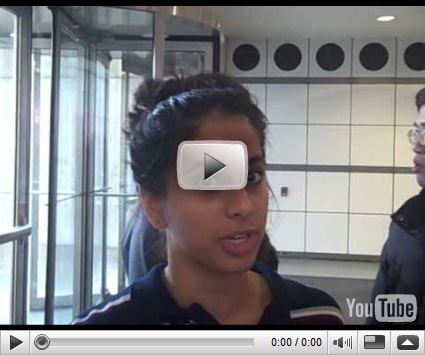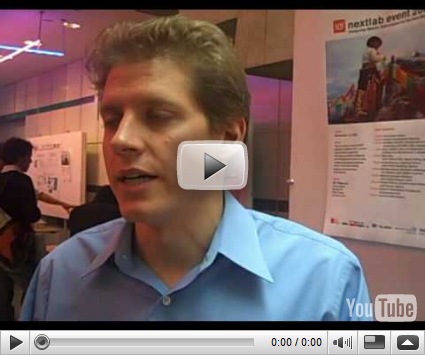“Phone First” in Boston
Last month I had the opportunity to attend NextLab 2008: Designing Mobile Technologies for the Next Billion Users. It was a one-day conference at the MIT Media Lab involving projects from an interdisciplinary class there focused on how to apply cell phone technology to help create social and economic opportunity for poor people throughout the world. In UPG, we call these “phone first” applications, and it is an area of keen interest to us. I was invited by Sandy Pentland, one of the faculty advisors of this class; he also works with the Next Billion Network at MIT.
There were seven projects showcased at the conference, ranging from supply chain distribution to healthcare to the seemingly-ubiquitous “use a phone to help a farmer get crop prices” scenario. All of these projects featured a combination of the creativity and energy of students paired with the real-world requirements of an NGO. The projects were conceived and designed in the fall and are going into pilot in the spring. You can learn more about the class here.
My favorite project is the “Boston Baby Blog”, an application where health care workers use an SMS based notification network to share baby care information with low income families who don’t necessarily surf websites on PCs but who definitely use text messaging. It’s the sort of application we talk about deploying in places like Africa, except it is being deployed right here in the US! Rashni Melgiri, a second year student at Sloan, explains the project:
Another project called MoCa involves the use of cell phones as a diagnostic tool to extend the reach of doctors and nurses well beyond a single medical clinic. Here is Clark Freifeld explaining how it works:
As part of the class, each team of students had to create a video explaining their project. I’ve embedded a link to each project along with a brief description of each as well. Most of these are just now entering field trials, and it is too early to determine the long term impact they will have. But if you are interested in ICT4D, and in particular the use of cells phones in this field, then you will be hard pressed to find a better collection of scenarios that demonstrate the promise that phone-based applications can have as a tool for advancing social and economic opportunity.
M-Commerce
This project involves an application that enables a small store or reseller in a village in India to use a cell-phone to reorder commonly stocked goods from a wholesaler or distributor. It consists of a little database on the phone and an SMS fulfillment system.
Final Video from Kady Buchanan on Vimeo.
MoCA
”Mobile Care” is an application that enables field medical workers to record symptoms on a phone using forms, voice annotation, and photos, and then submit them to a health clinic for a nurse or physician to review. It is similar to a project UPG piloted with midwives in Uganda.
Final Video from Elliot Higger on Vimeo.
Fighting Farmers
This is an agricultural extension application being tested in Zacatecas, Mexico. It enables farmers to upload crop pricing data in order to access a database of historical and local pricing information and trends.
Final Video from Paul Moore on Vimeo.
NextMap
This is an application that lets people use an SMS message to report a locally occurring incident, and the report is then uploaded to a server where it mapped. Key scenarios for this include disaster response (e.g., “the people upriver are reporting flooding!” ) or the tracking of environmental incidents. This project is similar to Project Butterfly from the students in Indonesia who won the Image Cup UP award last summer. And parts of NextMap run on Windows Mobile!
Disaster Management and Innovgreen Overview from Disaster Management on Vimeo.
Fellows Forum
This is a web and SMS-based social network for college students who have received grants from the Telmex foundation. Almost all of these students are poor and from developing countries, and the application gives them a way to connect with each other.
Final Video from Julianne Palazzo on Vimeo.
Multi-Level Marketing
This is a microfinance application in Ecuador that uses SMS as a networking and customer acquisition tool in a loan application process.
Get New Money Demo Video from Josh Kirchmer on Vimeo.
The Boston Baby Blog
My favorite application at the show involved a solution targeting a problem right here in Boston Mass. The Boston Baby blog is an SMS texting service that enables the city to communicate information around important parenting and healthcare milestones to low income parents of newborn children. They observed that many low income parents in Boston didn’t have computers or visit websites, but they all seemed to have cell phones and use text messaging. It’s a great example of a phone first scenario right here in our country.
Baby Blog Final from Javier Smith on Vimeo.


